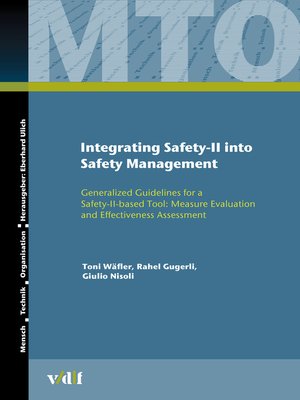Integrating Safety-II into Safety Management
ebook ∣ Generalized Guidelines for a Safety-II-based Tool: Measure Evaluation and Effectiveness Assessment · Mensch--Technik--Organisation
By Toni Wäfler

Sign up to save your library
With an OverDrive account, you can save your favorite libraries for at-a-glance information about availability. Find out more about OverDrive accounts.
Find this title in Libby, the library reading app by OverDrive.



Search for a digital library with this title
Title found at these libraries:
| Library Name | Distance |
|---|---|
| Loading... |
We all aim for safe processes. However, providing safety is a complex endeavour. What is it that makes a process safe? And what is the contribution of humans? It is very common to consider humans a risk factor prone to errors. Therefore, we implement sophisticated safety management systems (SMS) in order to prevent potential "human failure". These SMS provide an impressive increase of safety.
In safety science this approach is labelled "Safety-I", and it starts to be questioned because humans do not show failures only. On the contrary, they often actively contribute to safety, sometimes even by deviating from a procedure. This "Safety-II" perspective considers humans to be a "safety factor" as well because of their ability to adjust behaviour to the given situation. However, adaptability requires scope of action and this is where Safety-I and Safety-II contradict each other. While the former restricts freedom of action, the latter requires room for manoeuvring.
Thus, the task of integrating the Safety-II perspective into SMS, which are traditionally Safety-I based, is difficult. This challenge was the main objective of our project. We discovered two methods that contribute to the quality of SMS by integrating Safety-II into SMS without jeopardizing the Safety-I approach.







